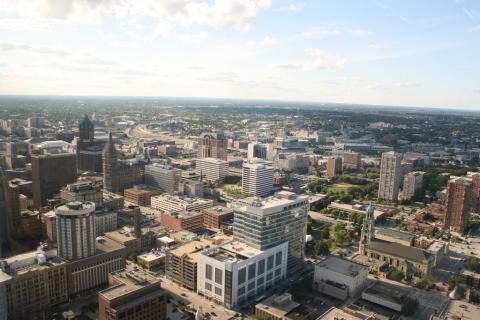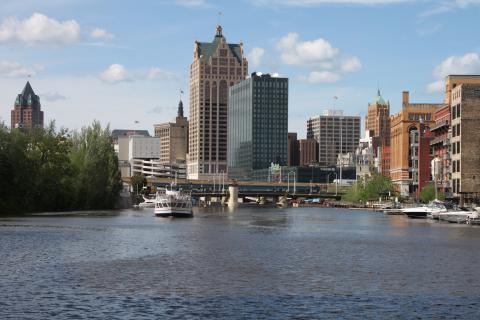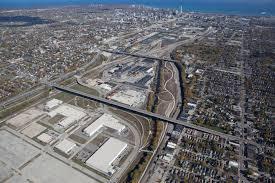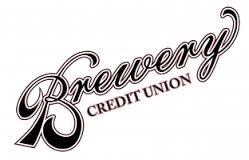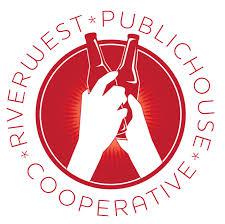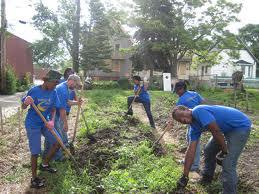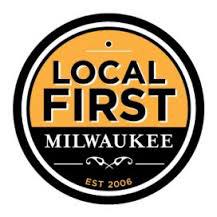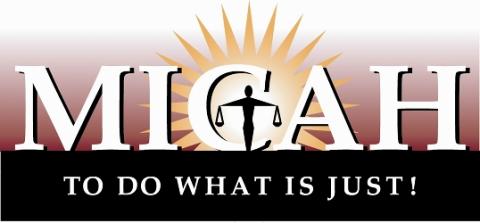Located on the southwestern shore of Lake Michigan, Milwaukee was incorporated in 1846. German immigrants, who came to Wisconsin in search of inexpensive farmland, fueled the city’s early growth. Over the following decades, Milwaukee attracted large groups of other immigrants, including Poles, Lithuanians, Italian, Irish, French, Russian, Bohemian, and Swedish. By 1910, Milwaukee ranked first in the nation, alongside New York City, for having the largest percentage of foreign-born residents. 1910 was also the year in which Milwaukee elected the country’s first Socialist mayor, and Socialists won most of the seats in the city council and county board. While socialists only retained their Council majority for two years, during the half-century period between 1910 and 1960, three different socialist mayors governed at City Hall for a total of 38 years.
In 1960, Milwaukee’s population peaked at 741,324, making it the eleventh largest city in the country. Similar to other industrial cities, its population began to decline afterward as a result of suburbanization and deindustrialization. However, Milwaukee did not experience population loss as severe as other post-industrial cities due to its large immigrant populations, many of whom remained in their historic neighborhoods.
As of 2010, Milwaukee was the 31st largest city in the country, with 594,800 residents. The city’s population was 37 percent non-Hispanic white, 40 percent African American, 17 percent Hispanic, 4 percent Asian, and 1 percent American Indian and Alaska Native. Despite this diversity, a study of 2010 Census data ranked Milwaukee as the most segregated city in the country, with a black-white dissimilarity score of 80 percent.
The city is also currently facing other serious challenges, including a poverty rate of nearly 30 percent. While Census estimates indicate that the city is slowly growing—adding 4,000 people between 2011 and 2013—most new residents are moving into condos being built in neighborhoods surrounding the downtown. As a result, some have described Milwaukee as a “tale of two cities,” with many neighborhoods facing extreme distress while others are booming, attracting primarily young, new residents.
Fortunately, Milwaukee is home to many community wealth building organizations and initiatives. For example, when the city demolished an abandoned, 1-mile freeway spur in 2002, 27 community-based organizations came together to ensure the land’s redevelopment would provide direct benefits to city residents. Their work resulted in the Park East Redevelopment Compact, a community benefit agreement that holds area developers to strong local hiring and wage standards and includes an affordable housing component. The city also has several exemplary wealth building initiatives centered around sustainable living and healthy, local food, including Growing Power, the only farm and greenhouse located in the city, and the Milwaukee Food Council, a diverse coalition collaborating to build a healthy, sustainable, economically vibrant, culturally relevant and just local food system. Demonstrating the current administration’s strong support of these types of efforts, the current Mayor, Tom Barrett, created an Office of Environmental Sustainability (OES), which is credited with stimulating $30 million of economic activity since 2010.
An overview of these and other community wealth building efforts follows:
